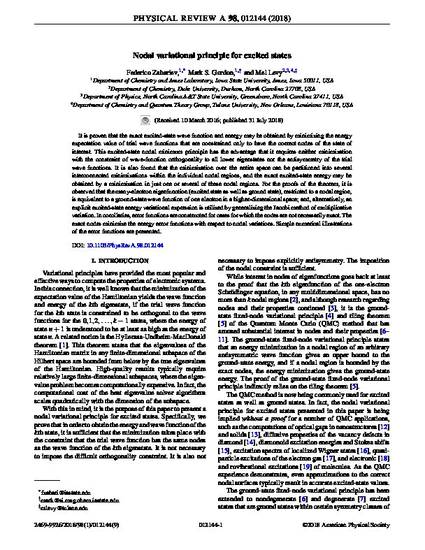
It is proven that the exact excited-state wave function and energy may be obtained by minimizing the energy expectation value of trial wave functions that are constrained only to have the correct nodes of the state of interest. This excited-state nodal minimum principle has the advantage that it requires neither minimization with the constraint of wave-function orthogonality to all lower eigenstates nor the antisymmetry of the trial wave functions. It is also found that the minimization over the entire space can be partitioned into several interconnected minimizations within the individual nodal regions, and the exact excited-state energy may be obtained by a minimization in just one or several of these nodal regions. For the proofs of the theorem, it is observed that the many-electron eigenfunction (excited state as well as ground state), restricted to a nodal region, is equivalent to a ground-state wave function of one electron in a higher-dimensional space; and, alternatively, an explicit excited-state energy variational expression is utilized by generalizing the Jacobi method of multiplicative variation. In corollaries, error functions are constructed for cases for which the nodes are not necessarily exact. The exact nodes minimize the energy error functions with respect to nodal variations. Simple numerical illustrations of the error functions are presented.
Available at: http://works.bepress.com/mark_gordon/454/
